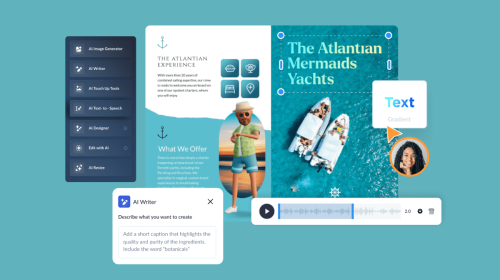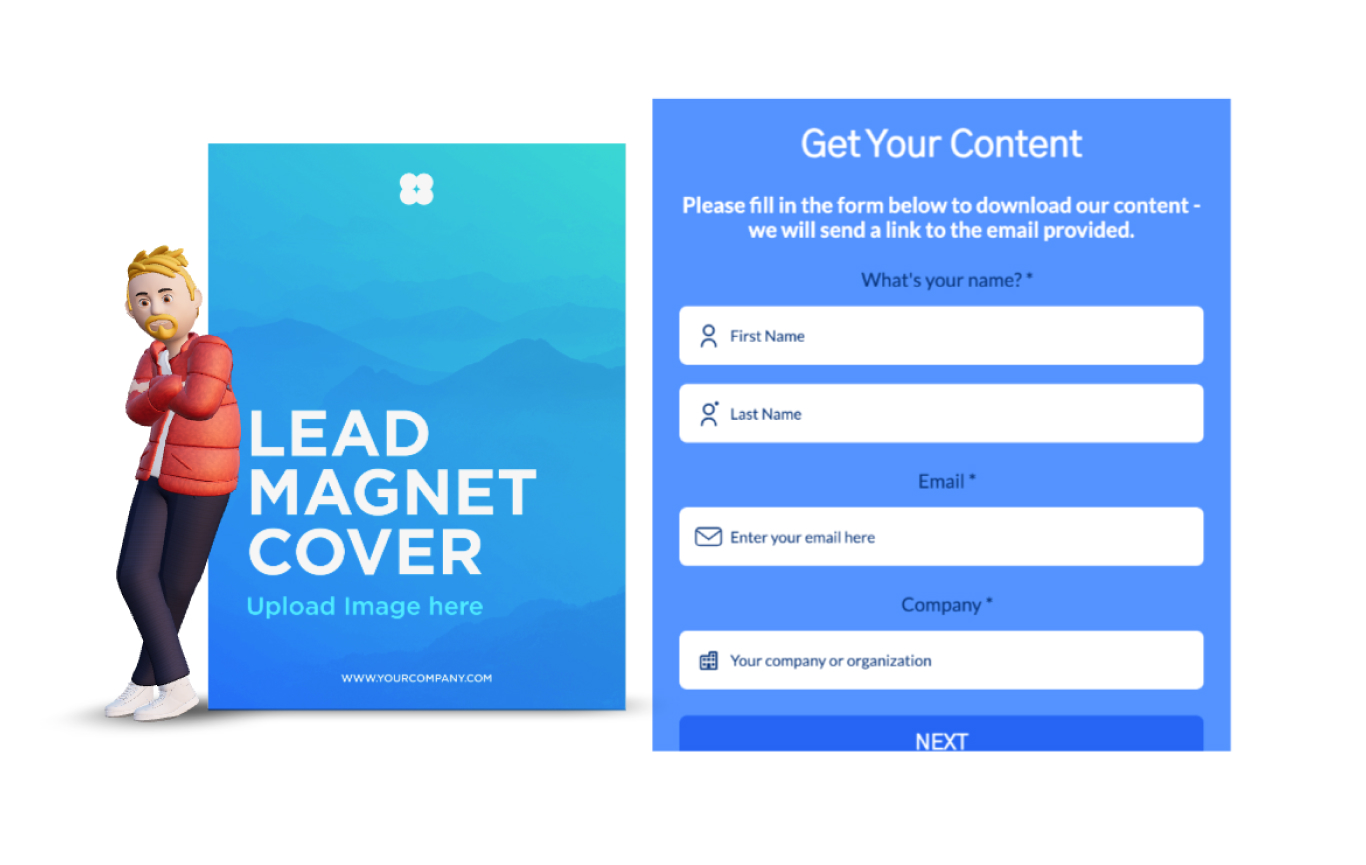
How to Build & Optimize Your Lead Generation Funnel


Hitting your revenue goals is about capturing and nurturing high-quality leads that will convert.
However, 68% of businesses struggle with generating and converting top-tier leads.
Without an optimized lead generation funnel, you might struggle as well. The success of your marketing and sales efforts depends on the quality of your lead funnel.
An optimized lead generation funnel is a visual roadmap that helps you engage, filter and nurture leads—from awareness to conversion. It not only adds structure to your sales process but also streamlines the customer journey and ultimately boosts sales.
But where do you start? In this guide, we'll explore practical steps to building an effective lead generation funnel that drives growth. We’ve also included templates, best practices and practical tips you can apply to your business right away.
Let's go!
A lead generation funnel, also known as a lead funnel, is a framework that outlines your potential customer's journey from the moment they discover your brand until they become paying customers.
This funnel represents the different stages your customers go through and how you engage and guide them toward making a purchase.
Much like a physical funnel, it starts with a wide opening at the top and narrows towards the end.
Many leads enter your funnel at the top, but as they progress, some drop off while they are filtered into prospects and eventually converted into customers.
With a well-designed lead generation funnel, you can gain insights into your potential customers' needs and behaviors. This will help you target them more with content and experiences that increase their interest and drive conversions.
B2B lead generation funnels often involve a more complex and longer sales process than B2C funnels. In this context, the customer is a business and the decision-making process typically requires multiple approvals.
In contrast, B2C lead generation funnels are often simpler and more straightforward than B2B funnels. Many routine and impulse purchases are influenced by emotional factors such as brand loyalty, product design and marketing campaigns, making the decision-making process for individual consumers less complex.
There are three lead generation funnel stages.
Made with Visme Infographic Maker
Your prospective customers enter through the top of the funnel (TOFU) and are converted into leads. Your leads are nurtured in the middle of the funnel (MOFU). Qualified leads or prospects are then passed to the bottom of the funnel (BOFU), where they are converted into customers.
Let’s take a closer look at each stage.
In the awareness stage, your potential customer has identified a problem or a knowledge gap and is actively seeking a solution. Their go-to resource for finding answers is Google. More than 50% of shoppers use Google to discover a new brand or product.
Your goal here should be to create valuable content that addresses your customer’s pain points and creates brand awareness.
Some top-of-the-funnel content ideas include:
Visme offers an extensive range of templates to help you create content and lead magnets for the top of the funnel.
As visitors land on your content or website, you need to make the most of that opportunity. Place a lead capture form to collect their information so you can nurture them towards conversion. Use Visme’s no-code online form builder to design beautiful, engaging, responsive lead gen forms in minutes.

Visme also offers templates for creating effective contact forms, email sign up forms, email collector forms, popup forms, registration forms and feedback forms.
See how Visme’s interactive form builder increased lead conversion and outperformed traditional forms in this case study.

As you interact with leads, glean insights into their browsing patterns, needs and goals. This will help you guide them through the rest of the lead generation funnel.
The consideration stage is where you establish a relationship with your leads and further qualify them. At this stage, your lead isn't just aware of your brand but has identified it as a potential solution to their problem.
Your main goal during the consideration stage is to build trust and nurture your leads.
Here are some middle-of-the-funnel content ideas
Visme uses a combination of these content ideas to nurture leads at the consideration stage.
Take a look at Visme’s page featuring case studies. It is packed with real-life examples of how Visme has helped companies achieve their goals.

Customers who come across this page or any of Visme’s case studies can trust selecting Visme as their preferred solution.
During the consideration stage, it is important to showcase the distinctive value that your product offers, which sets it apart from your competitors. The content you provide must be engaging enough to convince your leads that your solution or product is their best choice.
In the last stage of the lead generation funnel, your leads are ready to make a purchase decision. Here, they have streamlined their options and are doing final research before purchasing or investing in your product.
Your goal at this stage is to reassure your prospective customer that your solution is the right fit. Use this stage to clear any doubts and address any concerns. The target is to sell and provide a seamless purchase experience for your potential customers.
You can engage your potential customer with these bottom-of-the-funnel ideas:
The Visme blog has different bottom-of-the-funnel content to help leads make informed purchase decisions in our favor.

Follow these seven steps to build a winning lead generation funnel
Before you start building your lead generation funnel, it's crucial to plan and outline your goals. This step is essential for the overall structure and effectiveness of your funnel.
Here are some questions to help you plan:
Answering these questions during the planning stage will make building your lead generation funnel easier.
Once you've planned, turn your plans into goals. Goals provide a clear direction and help with decision-making. We recommend using the SMART goal framework to set goals.
Take a look at the dynamic SMART goals worksheet below. It includes specific questions for goal-setting and a cheat sheet for overcoming potential challenges.
The stars of your lead generation funnel are the individuals who will pass through it. Hence, it is important you identify and understand them.
Start by researching your target customer and creating either a buyer persona (for B2C companies) or an ideal customer profile (ICP) (for B2B companies). These tools provide valuable insight into your customer’s goals, demographics, buying behavior and more.
Additionally, you can get insight into potential customers' needs by analyzing your current customers. Finally, if you are just starting with no existing customer base, a good place to look at is your competitors.
Explore their social media profiles, websites and review platforms. Notice how customers interact with them and the feedback they give. Also, study the kind of customers they attract, their preferences and any recurring issues or pain points they may have.
A customer journey map is a visual representation of every interaction or experience a customer has with your business.
It allows you to better understand your customers, predict their behavior, anticipate their needs, and improve your approach. This is essential for creating an effective lead generation funnel that guides customers toward conversion.
Here's a customer journey map template you can easily customize.
Customer journeys include various stages that occur before, during and after customers engage with your brand or product. However, it's important to note that journey maps are not a one-size-fits-all solution.
First, you must identify the different touchpoints, channels and platforms through which potential customers can engage with your brand. This will enable you to create a tailored journey map for them.
However, simply knowing these touchpoints is not enough. You should also identify and predict potential barriers, challenges or frustrations customers may encounter along their journey.
For example, a complex checkout process on your website can discourage customers from completing their purchases. Poor customer service, such as long wait times and unhelpful responses, can also disrupt the customer journey and lead to frustration.
To understand your customers’ pain points, engage them with customer feedback forms like the one below.

Get to know them by conducting interviews, sending surveys and reading support tickets.
Removing barriers will not only enhance your customers' experience but also make their journey smoother. You'll increase the number of people who convert and become loyal customers.
Creating relevant content for each stage of the lead generation funnel cannot be overemphasized.
Why? Customers are constantly researching before they make a decision. According to Demand Gen, 55% of B2B buyers rely more on content for research to guide their purchasing decisions.
This means that you should prioritize creating and sharing useful content. The infographic below beautifully summarizes content ideas that are effective at each stage of the lead generation funnel.
But what makes content relevant? In a nutshell, relevant content is
Visme is an all-in-one content authoring tool that empowers you to create relevant content for each stage of the lead generation funnel. Our professionally designed templates ensure your content is consistent, personalized and professional.
Take advantage of Visme’s AI Document Creator to generate documents such as ebooks, reports, infographics, training manuals, whitepapers, newsletters and more. Open the AI document generator and input a prompt that explains what you're looking to create, select the design and watch the tool produce it in seconds.
Now you have the content ready, the next step is to generate traffic. There are several methods to attract visitors to your content or lead capture page including:
After dedicating time and effort to bringing traffic to your site, you don't want them to slip away.
We recommend using an interactive lead capture form that engages customers, gathers valuable information, and converts website visitors into leads.
We've tested interactive forms with stunning 3D characters on more than 700k visitors, and the results showed that they generate more engagement, boost user experience and increase conversion rates.

Visme's online form builder empowers you to quickly build attractive and engaging lead-capture forms that represent your brand and convert your visitors into leads.
The best part? You don't need any design or coding experience. Take advantage of our extensive range of professionally designed form and survey templates, such as
When you are done creating your lead capture form, you can share it directly as a link or embed it on your website.
Customize the lead capture form below by uploading your book cover, adding relevant fields and applying your brand assets to suit your brand.

After leads enter your funnel, your work doesn't end. According to HubSpot, 34% of prospects aren’t ready to make a purchase, which is the biggest reason they back out of deals.
Lead nurturing helps you overcome this hurdle by building relationships with your leads, addressing their questions, offering in-depth information and educating them about the solution to their problem.
Some lead nurturing strategies include
As you nurture your leads, you can identify and pre qualify those who engage the most with you.
After that, transfer your prequalified leads to your sales team. Ensure you provide all the relevant information to your sales team to effectively convert your leads into paying customers.
The final part of building an effective lead generation funnel is regularly analyzing its performance. This involves assessing how each part of the funnel attracts, nurtures and converts leads into customers.
For instance, Visme's lead capture tool provides valuable insights into user behaviors, form completion rate and form views.
Additionally, conversion rates, click-through rates and bounce rates are other metrics you can use to analyze your lead generation funnel. These metrics help you optimize the funnel for better results.
Visme also offers excellent data visualization tools such as graphs, progress bars, maps and more to present your data effectively. Use it to visualize your funnel to easily identify gaps where leads drop off.
Take a look at the lead generation funnel template below. It uses different colors to distinguish the various stages of your lead generation funnel and track how leads progress through each stage.
Here are four best practices to optimize your lead generation funnel for better or improved quality conversions
A lead magnet funnel is a marketing funnel designed to capture website visitors and convert them into leads. The focus is on offering your website visitors a lead magnet like a free guide, cheat sheet or exclusive access to your newsletter in exchange for their contact information.
A lead generation process involves the steps you take to attract, nurture and convert your visitors into leads and eventually into customers. It outlines the platforms, strategies and tools you will employ to achieve your lead generation goals.
A lead generation sales funnel combines marketing and sales strategies to convert a lead into a customer. It illustrates the steps that a lead takes before, during and after making a purchase.
Lead generation and sales funnel are closely related.
Lead generation focuses on increasing awareness, driving traffic and nurturing leads with various marketing tools and strategies. A sales funnel is primarily concerned with converting the leads you have captured and nurtured into paying customers.
Inbound lead generation refers to any marketing activity that attracts customers to your website or business, such as blog content that brings them to your website or social media.
On the other hand, outbound lead generation is when you reach out to potential customers directly. Cold calling, targeted emails and more are all proactive approaches for outbound lead generation.
A well-designed lead generation funnel pays off big time. It helps you attract more qualified leads and nurture them, leading to higher conversion rates and business growth.
Visme offers an extensive range of tools to streamline every stage of your lead generation funnel. Easily visualize your buyer persona, ICP and customer journey, design irresistible lead magnets and analyze your performance.
The best part? Visme’s lead-capture tool and customizable templates empower you to create attention-grabbing lead-capture forms that significantly boost your lead conversion rates.
Are you ready to take your lead generation to the next level? Get started with Visme today!
Improve your data collection from emails, leads, to surveys and more, by using beautifully designed forms that convert up 2X better.
Signup Free